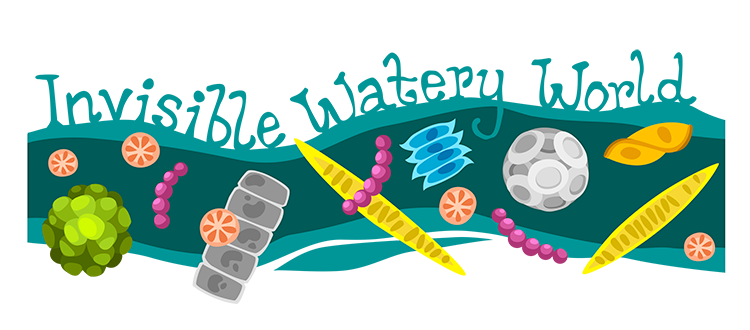Plankton Gallery
Plankton come in a bewildering variety of shapes, sizes, and colors. You can find them in many different places as well. Browse through the pictures below to get a taste of this variety, then head over to the Zoom Gallery for more photos and the chance to zoom in on them microscope-style.
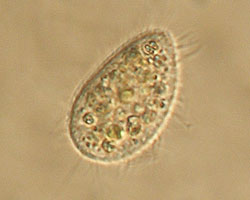
|
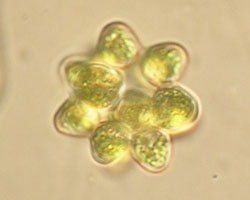
|
Freshwater lakes: The organisms above come from two lakes near Phoenix, Arizona. The ciliate is a type of zooplankton, or animal plankton, while the green algae is a group of phytoplankton (algae) cells that live together in a spiky ball.
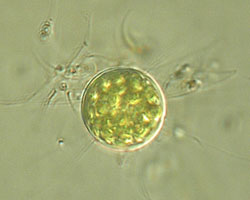
|
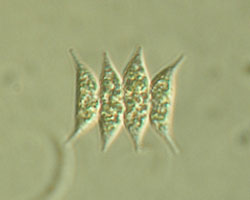
|
Fish ponds: These algae were growing in a koi fish pond. In fact, the algae were so dense that the water was completely green—it was impossible to see the fish unless they came to the surface! The pond must have been loaded with nutrients to allow so many phytoplankton cells to grow.
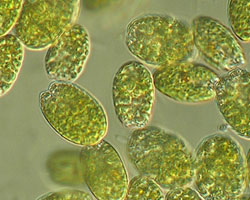
|
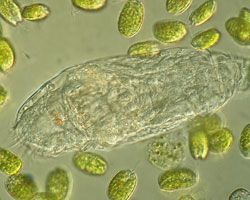
|
Saltwater runoff from a scientist’s experiment on soil: Phytoplankton and zooplankton can live in either fresh or salt water. Some species can survive in either, while others can only live in one. Creatures that live in salt water—including plankton—have special adaptations that allow them to live in a salty place.
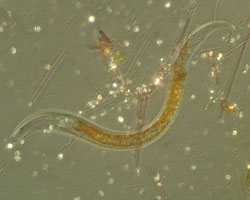
|
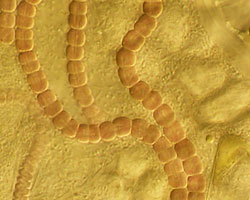
|
Aquariums: Have you ever kept fish or hermit crabs in an aquarium? Those animals weren’t the only things living in it! Aquariums make fabulous homes for all kinds of microorganisms; if the aquarium owner isn’t careful to keep the water clean, though, nutrients will build up and algae can take over, growing on everything in the tank! The organisms above come from a saltwater aquarium.
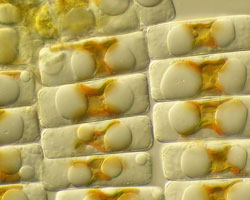
|
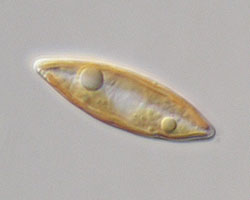
|
Sea ice: Algae in the Arctic Ocean live a hard life: their home freezes over for most of the year, and the fact that the sun doesn’t rise all winter means they can’t perform photosynthesis for months! Most plankton from warmer parts of the ocean couldn’t live in sea ice (the ice that forms on the ocean each year in the Arctic and Antarctic). To survive here, cells have to produce special chemicals that keep them from freezing in this world of ice.
Read more about: An Invisible Watery World
Bibliographic details:
- Article: Plankton Gallery
- Author(s): Dr. Biology
- Publisher: Arizona State University School of Life Sciences Ask A Biologist
- Site name: ASU - Ask A Biologist
- Date published:
- Date accessed:
- Link: https://askabiologist.asu.edu/plankton-gallery
APA Style
Dr. Biology. (). Plankton Gallery. ASU - Ask A Biologist. Retrieved from https://askabiologist.asu.edu/plankton-gallery
Chicago Manual of Style
Dr. Biology. "Plankton Gallery". ASU - Ask A Biologist. . https://askabiologist.asu.edu/plankton-gallery
Dr. Biology. "Plankton Gallery". ASU - Ask A Biologist. . ASU - Ask A Biologist, Web. https://askabiologist.asu.edu/plankton-gallery
MLA 2017 Style

It's like having your own microscope! Visit the Plankton Zoom Gallery to explore and then have fun zooming in and moving around each image.
Be Part of
Ask A Biologist
By volunteering, or simply sending us feedback on the site. Scientists, teachers, writers, illustrators, and translators are all important to the program. If you are interested in helping with the website we have a Volunteers page to get the process started.

